Guanidine hydrochloride

Guanidine hydrochloride structure
|
Common Name | Guanidine hydrochloride | ||
|---|---|---|---|---|
| CAS Number | 50-01-1 | Molecular Weight | 95.531 | |
| Density | 1.18 g/mL at 25 °C(lit.) | Boiling Point | 132.9ºC at 760 mmHg | |
| Molecular Formula | CH6ClN3 | Melting Point | 180-185 °C(lit.) | |
| MSDS | Chinese USA | Flash Point | N/A | |
| Symbol |

GHS07 |
Signal Word | Warning | |
Use of Guanidine hydrochlorideGuanidine HCl, the crystalline compound of strong alkalinity formed by the oxidation of guanine, is a normal product of protein metabolism and a protein denaturant.Target: OthersGuanidine HCl is the most popular protein denaturant. Analysis of unfolding transitions by Guanidine HCl provides several important parameters regarding the mechanism of conformational stability of proteins. Guanidine HCl at low concentrations refolds acid-unfolds apomyoglobin and cytochrome c, stabilizing the molten globule state. Guanidine HCl (> 1 M) causes co-operative unfolding of the molten globule state [1]. Guanidine HCl at millimolar concentrations, is able to causes efficient loss of the normally stable [PSI+] element from yeast cells. 5 mM Guanidine HCl in growth media cures [PSI+] and other prions of yeast. 5 mM Guanidine HCl significantly reduces Hsp104-mediated basal and acquired thermotolerance by 30-fold and 50 fold, respectively. Guanidine HCl also reduces the ability of Hsp104 to restore activity of thermally denatured luciferase [2]. |
| Name | Guanidine hydrochloride |
|---|---|
| Synonym | More Synonyms |
| Description | Guanidine HCl, the crystalline compound of strong alkalinity formed by the oxidation of guanine, is a normal product of protein metabolism and a protein denaturant.Target: OthersGuanidine HCl is the most popular protein denaturant. Analysis of unfolding transitions by Guanidine HCl provides several important parameters regarding the mechanism of conformational stability of proteins. Guanidine HCl at low concentrations refolds acid-unfolds apomyoglobin and cytochrome c, stabilizing the molten globule state. Guanidine HCl (> 1 M) causes co-operative unfolding of the molten globule state [1]. Guanidine HCl at millimolar concentrations, is able to causes efficient loss of the normally stable [PSI+] element from yeast cells. 5 mM Guanidine HCl in growth media cures [PSI+] and other prions of yeast. 5 mM Guanidine HCl significantly reduces Hsp104-mediated basal and acquired thermotolerance by 30-fold and 50 fold, respectively. Guanidine HCl also reduces the ability of Hsp104 to restore activity of thermally denatured luciferase [2]. |
|---|---|
| Related Catalog | |
| References |
| Density | 1.18 g/mL at 25 °C(lit.) |
|---|---|
| Boiling Point | 132.9ºC at 760 mmHg |
| Melting Point | 180-185 °C(lit.) |
| Molecular Formula | CH6ClN3 |
| Molecular Weight | 95.531 |
| Exact Mass | 95.025024 |
| PSA | 75.89000 |
| LogP | 1.14090 |
| Index of Refraction | n20/D 1.465 |
| InChIKey | PJJJBBJSCAKJQF-UHFFFAOYSA-N |
| SMILES | Cl.N=C(N)N |
| Storage condition | Store at RT. |
| Stability | Stable. Hygroscopic. Incompatible with strong oxidizing agents. |
| Water Solubility | 2280 g/L (20 ºC) |
CHEMICAL IDENTIFICATION
HEALTH HAZARD DATAACUTE TOXICITY DATA
MUTATION DATA
|
| Symbol |

GHS07 |
|---|---|
| Signal Word | Warning |
| Hazard Statements | H302 + H332-H315-H319 |
| Precautionary Statements | P261-P280-P301 + P312 + P330-P304 + P340 + P312-P305 + P351 + P338-P337 + P313 |
| Personal Protective Equipment | dust mask type N95 (US);Eyeshields;Faceshields;Gloves |
| Hazard Codes | Xn:Harmful |
| Risk Phrases | R22;R36/38 |
| Safety Phrases | S26-S36-S22 |
| RIDADR | NONH for all modes of transport |
| WGK Germany | 1 |
| RTECS | MF4300000 |
| HS Code | 2925290090 |
|
~% 
Guanidine hydro... CAS#:50-01-1 |
| Literature: Sander Patent: DE527237 , 1928 ; Fortschr. Teerfarbenfabr. Verw. Industriezweige, vol. 18, p. 358 |
|
~% 
Guanidine hydro... CAS#:50-01-1 |
| Literature: Staehler, A. Ber. Dtsch. Chem. Ges., 1914 , vol. 47, p. 903 - 913 |
|
~% 
Guanidine hydro... CAS#:50-01-1 |
| Literature: Gmelin Handbook: C: MVol.D1, 49.1.2, page 466 - 467 Full Text Show Details Sander, F. Patent: DE527237 , 1931 ; |
|
~% 
Guanidine hydro... CAS#:50-01-1 |
| Literature: Rathke Chemische Berichte, 1885 , vol. 18, p. 3106 Chemische Berichte, 1887 , vol. 20, p. 1059 |
|
~%
Detail
|
| Literature: Staehler Chemische Berichte, 1914 , vol. 47, p. 912 |
|
~% 
Guanidine hydro... CAS#:50-01-1 |
| Literature: Knorr Chemische Berichte, 1917 , vol. 50, p. 234 |
|
~% 
Guanidine hydro... CAS#:50-01-1
Detail
|
| Literature: Sugino; Yamashida Nippon Kagaku Kaishi, 1944 , vol. 65, p. 271,279 Chem.Abstr., 1947 , p. 3763 |
| Precursor 7 | |
|---|---|
| DownStream 10 | |
| HS Code | 2925290090 |
|---|---|
| Summary | 2925290090 other imines and their derivatives; salts thereof。Supervision conditions:None。VAT:17.0%。Tax rebate rate:9.0%。MFN tariff:6.5%。General tariff:30.0% |
|
A vaccine formulation combining rhoptry proteins NcROP40 and NcROP2 improves pup survival in a pregnant mouse model of neosporosis.
Vet. Parasitol. 207(3-4) , 203-15, (2015) Currently there are no effective vaccines for the control of bovine neosporosis. During the last years several subunit vaccines based on immunodominant antigens and other proteins involved in adhesion... |
|
|
Serum- and growth-factor-free three-dimensional culture system supports cartilage tissue formation by promoting collagen synthesis via Sox9-Col2a1 interaction.
Tissue Eng. Part A 20(15-16) , 2224-33, (2014) One of the factors preventing clinical application of regenerative medicine to degenerative cartilage diseases is a suitable source of cells. Chondrocytes, the only cell type of cartilage, grown in vi... |
|
|
Affinity precipitation of a monoclonal antibody from an industrial harvest feedstock using an ELP-Z stimuli responsive biopolymer.
Biotechnol. Bioeng. 111(8) , 1595-603, (2014) In this work, a proof of concept elastin-like polypeptide-Z domain fusion (ELP-Z) based affinity precipitation process is developed for monoclonal antibody (mAb) purification from industrial harvest f... |
| ZYZUM &&HCl |
| Guanidine hydrochloride (1:1) |
| guanidinium chloride |
| Guanidine, hydrochloride (1:1) |
| Guanidine monohydrochloride |
| Amino(imino)methanaminium chloride |
| GdmCl |
| Guanidine (hydrochloride) |
| guanidine chlorhydrate |
| hydrochloric acid guanidine |
| Aminoformamidine hydrochloride,Aminomethanamidine hydrochloride,Guanidinium chloride |
| Guanidine Hydrochlor |
| Guanidine chloride |
| Aminoformamidine hydrochloride |
| GUANIDIUM CHLORIDE |
| GUHY |
| Aminoformamidine hydrochloride,Guanidinium chloride,Guanidium chloride |
| 1-methylguanidine hydrochloride |
| Aminomethanamidine hydrochlorid |
| MFCD00013026 |
| AMINOFORMAMIDINE HCL |
| Guanidinehydrochloride |
| Guanidine, monohydrochloride |
| usafek-749 |
| EINECS 200-002-3 |
| Guanidinhydrochlorid |
| Guanidine Hydrochloride |
| Guanidine HCl |
| guanidinium hydrochloride |

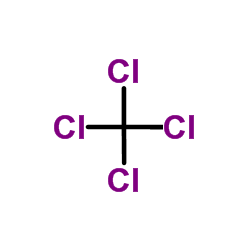
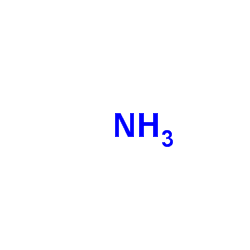


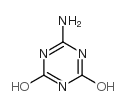




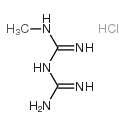


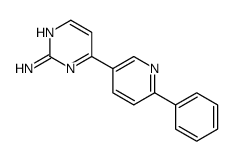 CAS#:1048004-08-5
CAS#:1048004-08-5 CAS#:308348-93-8
CAS#:308348-93-8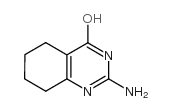 CAS#:33081-07-1
CAS#:33081-07-1 CAS#:50840-23-8
CAS#:50840-23-8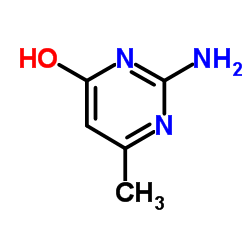 CAS#:3977-29-5
CAS#:3977-29-5 CAS#:141-83-3
CAS#:141-83-3 CAS#:4261-14-7
CAS#:4261-14-7 CAS#:196403-27-7
CAS#:196403-27-7 CAS#:1955-61-9
CAS#:1955-61-9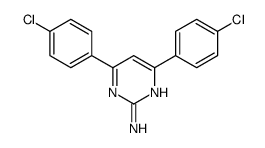 CAS#:215257-64-0
CAS#:215257-64-0
